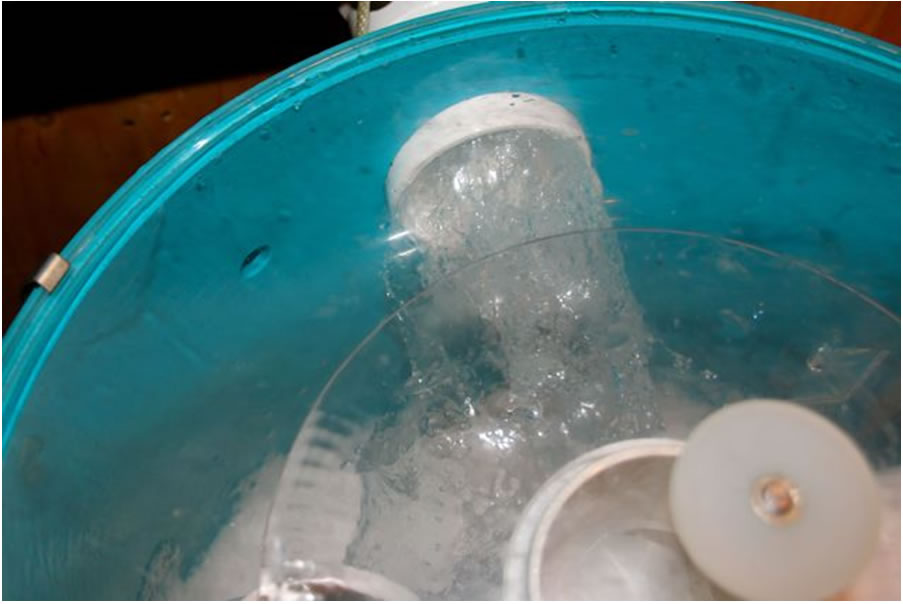It is Easter Sunday and the sun is rising, revealing a clear blue sky. It has been a cold night, but the higher elevations of Nebraska Knoll Sugarbush, especially the south facing slopes of Keystone, are already beginning to thaw under a strong, late March sun. The trees here are getting restless as the solar heat riles the sap in their veins. The lower slopes and Valley bottom however, are still under the grips of colder temperatures.
There are eight main lines entering the sap shed, arriving in four pairs of wet and dry lines, each coming from different sections of the bush. The wet lines transport the sap downhill from the trees, and the dry lines transport the vacuum to the trees. This morning the lower wet lines were still solidly frozen when the sap began running higher up. As pressure built from this blockage, the sap was pushed into the dry lines, which began running “wet”.
Chief of operations was monitoring this situation at the release tank where the lines end in the shed. I stood like a soldier preparing for battle, as I knew by the large volume of sap pouring out of the dry lines, that when the ice blockage melted out, an overpowering sap surge would follow. The wet lines soon began to trickle, and within minutes were running at full capacity. Outside, the torrent of sap was pummeling the lines where they curve at a right angle into the shed, making them vibrate. We call this phenomenon line thrash.
The two-horsepower pump, which pumps the sap from the release tank into the holding tanks, was quickly overwhelmed, and the vacuum was shut off. This pump, which is triggered by a float in the release tank and usually runs in cycles, was now running non-stop. It was pumping the sap into one of the twin 1200-gallon storage tanks in the shed, which are connected by a 1 ½” drain, and normally fill simultaneously. The tank was filling so quickly, that the sap level didn’t have time to equalize with its twin, and was soon about to overflow. There are two large 3200-gallon tanks in the upper sap shed, which are the backup when the lower tanks are full. I was averse to filling them at this moment since they were in bad need of cleaning (I had intended to clean them while the lower tanks were filling). Help arrived just in time to clean them before much sap was lost.
I quickly discovered the situation was still out of control, as pumping the sap uphill slowed the pump down just enough to prevent it from keeping up with the incoming deluge, overflowing the release tank. My solution at this point was to direct the sap into the lower tank, which by then had equalized enough with its twin to allow a little more in. Just before it overflowed, I changed over to the upper tank until the release tank was about to overflow, and then back to the lower. This cat and mouse game went on for the better part of an hour before the chaos stabilized. Amazingly, I lost very little precious sap in the process.
A sugarmaker would never admit there is such a thing as too strong a sap run, but experiences like this test that opinion.
Three inch inlet to release tank overwhelmed by incoming sap.
Lew Coty March 31, 2013




